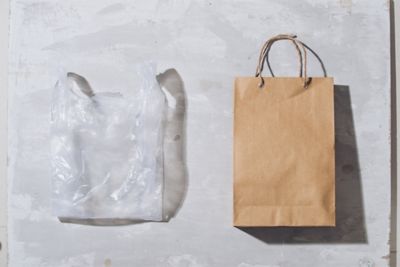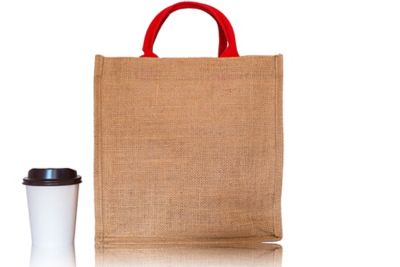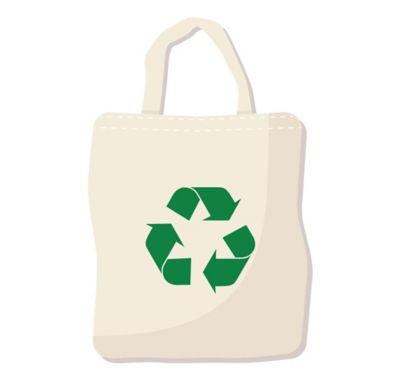-
United States -
United Kingdom -
India -
France -
Deutschland -
Italia -
日本 -
대한민국 -
中国 -
台灣
-
Ansys is committed to setting today's students up for success, by providing free simulation engineering software to students.
-
Ansys is committed to setting today's students up for success, by providing free simulation engineering software to students.
-
Ansys is committed to setting today's students up for success, by providing free simulation engineering software to students.
-
Contact Us -
Careers -
Students and Academic -
For United States and Canada
+1 844.462.6797
ANSYS BLOG
August 21, 2019
Paper, Plastic or Jute — What’s Best for Shopping Bags?
Few products get worse press than plastic shopping bags. They are made from oil, don’t degrade and are distributed freely — in vast numbers. Plastic bags litter the countryside, snaring birds and choking turtles.
On the other hand, paper bags are made from natural materials and are biodegradable. Surely, it’s better to use paper — right? And come to think of it, why not use bags made of jute? It’s a renewable resource that can be used to make reusable bags. That must be the best option of all — right?
What’s the best shopping bag material — paper or plastic?
The function of an eco-friendly bag is to contain objects while maintaining a minimum ecological footprint. So, perhaps one of the best ways to judge these materials, ecologically speaking, is to use a carbon footprint (CO2-eqivilent) as a measure. Using this value, let’s examine plastic, paper and jute bags with approximately the same capacity.
Comparing Eco-Friendly Shopping Bags
Here is the list of bags we will compare for their ecological footprint.
Polyethylene Bags: Imagine that “bag 1” is a typical one-use supermarket container. It is made of polyethylene (PE) and it weighs about 7 grams. Now imagine “bag 2” is also made of PE but is 3 times heavier. Bag 2 also has a designer graphic. It is attractive, strong and too good to throw away — at least not straight away.
A jute shopping bag.
Paper Bags: Let’s say that “bag 3” is made of paper. Paper bags suggest a concern for the environment — a deliberate avoidance of plastic. They are good for a company’s image. But they have more mass — about 7 times more than bag 1.
Reusable Bags: Next, imagine “bag 4” is a reusable bag. It is robust and durable. It looks and feels as if it’s made from a woven fabric. However, looks are deceiving — it’s made from polypropylene (PP). The green color and logo denote that it’s good for the environment, but is it?
Jute/Cotton Bags: Finally, imagine that “bag 5” is the choice of minimalists and environmentalists. The bag is discrete, understated and unnoticeable. Those who have one have the quiet satisfaction of knowing that it is made of juco — a 75% jute and 25% cotton blend. However, this bag uses a great deal of material — 36 times more than bag 1.
The Ecological Material Facts of Shopping Bags
The combatants are set. Now let’s see how they compare.
Ecological characteristics of shopping bags.
The data show you the difficulty in choosing the best materials for reusable bags. Often, eco-bags wander into a world that isn’t about containment; they are about company and self-image. However, our interest is eco-analysis — not psychoanalysis.
So, consider the following question: if bag 1 is really used once, how many times do you have to use the reusable bags to have a smaller carbon footprint?
The table’s fourth column lists the carbon footprints, per kilogram, of PE, PP, paper and juco. The fifth column is made by multiplying these values by the mass of 100 bags. Using the ecological footprint of 100 plastic bags (bag 1) you can normalize the data in column 5 to create column 6. Column 6 shows the number of times a reusable bag must be used to provide a lower carbon footprint than bag 1.
Which Shopping Bag is Best for the Environment?
The short answer is that people need to make their own judgments. Which bag is the best? That comes down to your habits.
Would you reuse a paper bag five times? Unlikely, they rip easily and get soggy when it rains. If you don’t, then with respect to a carbon footprint, plastic bags (bag 1) win over paper bags (bag 3).
What about the reusable bags? Would you use bag 4 more than 17 times? I have a similar one that has already been used more than that — so for me it’s a winner. However, you might have a stash of these bags at home collecting dust. In this case, they would also lose to the plastic bags.
Is this bag have a better carbon footprint than a plastic bag? It depends on how much you use it.
Finally, bag 5 needs to be used 30 times before it can have an equivalent carbon footprint to bag 1. This is not impossible — provided nothing leaks or breaks.
So, from a carbon point of view, single-use bags are not necessarily bad — it depends on how meticulous you are about reusing any other bag. The real problem with plastic is that its negligible value entices people to discard it without a thought. Plastic bags also have a long life causing them to accumulate on land and water — where it disfigures the countryside and harms wildlife.
To learn more about materials education, and selection, read: Material Intelligence with Ansys Granta.















